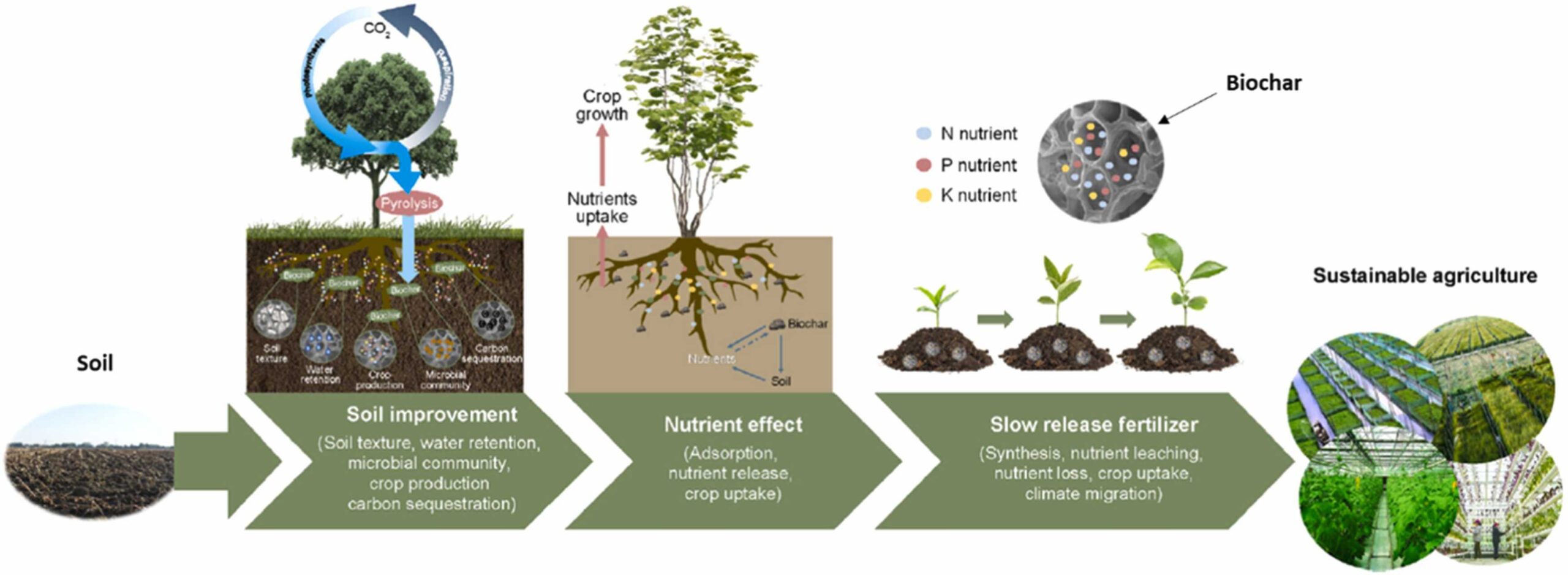Biochar’s Role in Slow-release Fertilizers
December, 2024
Posted at 17:55h
in Biochar for Agribusiness: Research and Case Studies
Slow-release fertilizers are a solution to many of the issues facing the fertilizer industry, when combined with biochar, instead of degradation that needs more and more fertilizer, the biochar builds soil health, increases nutrient use efficiency, water retention, sequesters carbon, and reduces the amount of synthetic nitrogen needed. With a slow-release fertilizer, the plant gets what it needs when it needs it.
- Traditional Fertilizers are used to increase plant productivity and yield, but simultaneously create economic and climate concerns.
- Macronutrients have the greatest influence on the development and productivity of crops. Phosphorus (P) and nitrogen (N) are the primary nutrients that promote plant development and increase crop output.
- Leaching, run-off and breakdown of these nutrients increase the amount of fertilizer needed to keep up with production.
Source: Divyangkumar & Lal Panwar 2024


